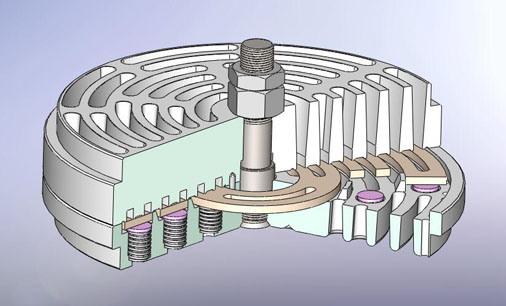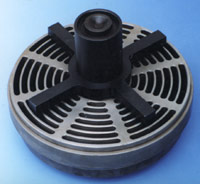[3DPrintedLife aka Andrew DeGonge] saw that advert for gatorade that shows some slick stop-motion animation using a so-called ‘liquid printer’ and wondered how they built the machine and got it to work so well. The answer, it would seem, involves a lot of hard work and experimentation.
Conceptually it’s not hard to grasp. A water reservoir sits at the top, which gravity-feeds into a a series of electromechanical valves below, which feed into nozzles. From there, the timing of the valve and water pressure dictate the droplet size. The droplets fall under the influence of gravity, to be collected at the bottom. From that point it’s a ‘simple’ matter of timing droplets with respect to a lighting strobe or camera shutter and hey-presto! instant animation. Pn10pn16 Y Strainer Pipe Fitting

As will become evident from the video, it’s just not as easy as that. After an initial wobble when [Andrew] realised that cheap “air-only” solenoids actually are for air-only when they rusted up, he took a slight detour to design and 3D print his own valve body. Using a resin printer to produce fine detailed prints, enabled the production of small internal passages including an ‘air spring’ which is just a small chamber of air. After a lot of testing, proved to be a step in the right direction. Whether this could have been achieved with an FDM printer, is open to speculation, but we suspect the superior fine detail capabilities of modern resin printers are a big help here.
In a nice twist, [Andrew] ripped open and dissolved a fluorescent marker pen, and used that in place of plain water, so when illuminated with suitably triggered UV LED strips, discernable animation was achieved, with an eerie green glow which we think looks pretty neat. All he needs to do now is upgrade the hardware to make a 3D array with more resolution, and he can start approaching the capability of the thing that inspired him. Work on some custom electronics to drive it has started, so this is one to watch in the coming months!
We’ve seen many water-based display device before, like this one that projects directly onto a thin stream of water, and this strangely satisfying hack using paraffin and water, but a full 3D Open Source display device seems elusive so far.
All project details can be found on the associated GitHub.
The original stop-motion animation advert for ‘gatorade’ that inspired this work:
Thanks [BaldPower} for the tip!
Company in Milwaukee has a business with a similar approach
exactly, it’s not that hard or special to achieve
Stratasys made great FDM printers in the early 90s. Why do we keep seeing articles about DIY 3D printing then? It’s not that hard or special to achieve
The fluid solenoid valves used in the gatorade ad are shown in this short documentary (0:26) https://youtu.be/FG_l1oacWoQ Anyone know what type they are? There is also a Washington University wiki page about a build project around this ad, but they use different valves: https://classes.engineering.wustl.edu/ese205/core/index.php?title=Gatorade_Maker_Log
Looks like they might be air valves. Search Aliexpress for “Tiny mini Electric Solenoid Valve”. You’ll find some very very similar in-line ones…
The WUSTL project looks like a dispenser for Gatorade drink mix powder and a water dispenser to fill a container to a detected weight.
I highly recommend, learning how to use, commas.
Wait, this wasn’t written by Shatner?
Anyone know how much power these valves require? ( I want to control drip irrigation from rain tank flow via solar.)
Please be kind and respectful to help make the comments section excellent. (Comment Policy)
This site uses Akismet to reduce spam. Learn how your comment data is processed.

24vdc Solenoid Valve Coils By using our website and services, you expressly agree to the placement of our performance, functionality and advertising cookies. Learn more